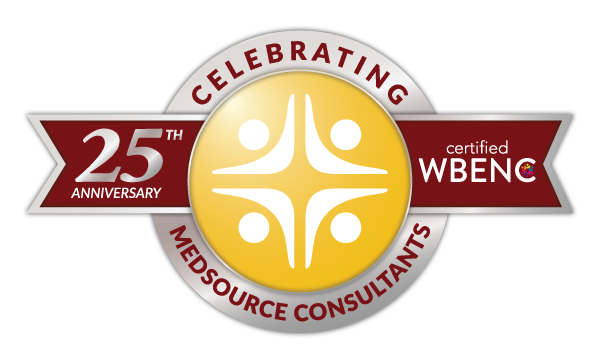Six Sigma: Optimizing Efficiency in Healthcare
Robyn Earley, MA, CCC-SLP

The growing healthcare organization realized that it had a big problem. The senior leadership team needed to strengthen the organization’s market share by increasing participation in ACO’s and other shared savings initiatives. One of the key metrics requested by potential partners was data on patient satisfaction. Unfortunately, the organization struggled to get a statistically significant number of surveys back from discharged patients. How would the company address this issue?
After several unsuccessful modifications to the process, organizational leadership called upon a newly formed Lean/Six Sigma team to develop a solution. This team developed a process that increased survey returns from less than 50% to greater than 75%. This resulted in data that clearly and reliably demonstrated high patient satisfaction. The results allowed the organization to secure several partnership agreements and obtain a better understanding of their patient’s satisfaction.
How often have you been part of an organization or practice that has a problem and develops a quick solution that doesn’t seem to last over time? What if the proposed answer or solution didn’t even address the real issue? Or solved one problem only to create another?
Like any other business, healthcare suffers from operational hazards. To avoid some of these pitfalls, many healthcare leaders have looked to other industries for potential solutions.
Manufacturing has been utilizing Lean/Six-Sigma methodology to improve production for decades. You may have already encountered Lean/Six-Sigma leaders within your own practice or heard of it being applied within other healthcare environments. Understanding these concepts can assist in optimizing efficiency while maintaining high quality in a variety of healthcare settings.
We can no longer ignore the powerful shift from volume based to value based healthcare models that began over five years ago. With government reimbursement tied into resource utilization, efficiency and cost reduction, strategies to optimize value-based purchasing in the complex environment of healthcare delivery can be daunting. With new HCAHPS score requirements now putting 2% of reimbursement dollars at risk, organizations are increasingly adopting Lean/Six-Sigma as a tool to produce sustainable change. While Lean/Six-Sigma application in healthcare started back in the early 2000’s, more and more organizations are looking to utilize these tools to create and sustain positive change.
The regulatory climate and changes in reimbursement make it even more critical to provide the highest efficiency and quality care. Many people think of Lean/Six-Sigma as a tool focused solely on cost cutting, but when applied to healthcare, this methodology can create a more positive environment for physicians, patients and staff in addition to reducing costs.
Some quick history: Lean is a concept that was developed from the Toyota Production System (TPS). Toyota’s goal is to produce vehicles of high quality in the quickest and most efficient way. The focus of Lean is to eliminate all waste in the production process. There are seven areas of waste in TPS but when applied to healthcare we use the following 8:
• defects
• over-production
• transportation
• waiting
• inventory
• motion
• over-processing
• human-potential
The application of Lean seeks to eliminate waste in these areas, thus optimizing efficiency, enhancing productivity, decreasing personnel costs, and increasing financial performance. Some examples of waste in healthcare include errors in EMR or prescriptions, waiting times for patients and physicians or unnecessary repetition of labs or imaging due to errors.
Six-Sigma is a concept that focuses on reducing process variation using process metrics and statistical analysis. “Sigma” is a statistical measurement reflecting how well a product or process is performing. Six-Sigma indicates a very low level of defects or errors (3.4 errors/million) which is critical in the field of healthcare. Standardization, measurement and analysis are the key components of this approach.
One of my old CEO’s frequently said: “variability reduces quality”. If clinicians treat the same problem in multiple ways, there is likely one way that is the best practice. By developing standard practice guidelines, there is greater reliability within the department and practice. The integration of Lean and Six-Sigma combines this problem-solving methodology and is utilized to tackle some of the most pervasive challenges in healthcare. The process applies these five steps consecutively:
1. Define
2. Measure
3. Analyze
4. Improve
5. Control
First, clearly define the problem to solve. Then, measure its severity, interpret the results of data collection, make improvements to the process and set structure in place to ensure solution sustainability. How does this work in practice? Let us return to our introductory example:
When the organization was challenged with increasing survey response, the Lean/Six-Sigma team first determined the extent of the problem by gathering a better understanding of what patients were returning surveys. Through a root cause analysis, barriers for survey return were clearly identified.
Then, by incorporating voice of customer data, they came up with a solution that improved the response rate considerably. Previous solutions hadn’t included the viewpoint of patients and families to understand what would drive them to complete and return the surveys.
By creating a portal that allowed patients and families to complete the surveys by mail, on-line, or even on their mobile phones, they increased the ease of completion. This was one example of several solutions that dramatically increased the organization’s response and validated the results.
As part of this process, the project leader will ask stakeholders for input. This is critical to ensure one problem is not solved at the expense of creating another. The goal is to engage all members of the workforce to provide value for patients and minimize waste in the delivery of healthcare. Clinicians are naturally suited for using these strategies as they include a more scientific method of sustainability than is often found in other organizational initiatives. Lean/Six-Sigma requires both leadership and participant commitment, organizational support, and a dedicated effort to achieve lasting results.
Some examples of successful application of Lean/Six-Sigma in healthcare include:
- Sharp Grossmont Hospital and Sharp Memorial Hospital shortened the median time between discharge orders and actual discharge from 2.2 hours to a median of about 1.5 hours.
- Johnson City Medical Center reduced inventory of ED supplies by $89,000 per year through regular restocking of supplies and saved approximately $150,000 per year in supply expense. The process positively impacted satisfaction scores by reducing frustration for staff and patients.
- At Memorial Hermann Southwest Hospital, surgeons had expressed dissatisfaction with the length of time required to prepare the operating room between cases. After completing a Lean/Six-Sigma analysis, the baseline turnover of 24 minutes was reduced to 20 minutes. More importantly, the number of defects (turnovers exceeding 25 minutes) dropped from 40% to 21%. Eleven months post-improvement, the organization continued to sustain these results.
Simply put, when used effectively, Lean/Six-Sigma works. With reimbursement reliant on positive quality metrics, the adoption of sophisticated, measurement-driven approaches to process improvement (such as Lean/ Six-Sigma) may become the new normal. As an organization that works consistently to understand the present environment and predict the future of healthcare, MedSource Consultants takes pride in working with our partners to preemptively address issues and optimize their hiring process.
